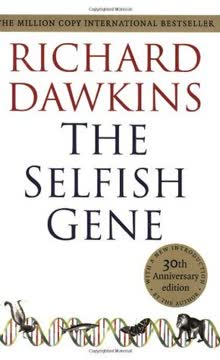Key Takeaways
Geographic factors shaped the unequal development of human societies
Yali's question went to the heart of the mystery of human history.
Continental differences: Eurasia's east-west axis facilitated the spread of crops, livestock, and technologies across similar latitudes. In contrast, the Americas' and Africa's north-south axes hindered such diffusion due to varying climates and ecosystems.
Resource availability: The abundance and distribution of domesticable plants and animals varied greatly between continents. Eurasia had a wealth of potential domesticates, while the Americas and Australia had far fewer. This disparity led to different rates of agricultural development and societal complexity.
- Eurasia: 13 species of large domestic mammals
- Americas: Only 1 (llama/alpaca)
- Australia: None
Food production was the catalyst for societal advancement
Why did wealth and power become distributed as they now are, rather than in some other way?
Agricultural revolution: The transition from hunter-gatherer societies to food-producing ones marked a turning point in human history. This shift allowed for population growth, specialization of labor, and the development of complex societal structures.
Competitive advantage: Societies that adopted food production earlier gained significant advantages over those that remained hunter-gatherers. These advantages included:
- Higher population densities
- Ability to support non-food-producing specialists (e.g., craftsmen, soldiers, priests)
- Development of new technologies
- Accumulation of wealth and resources
Domestication of plants and animals drove technological progress
All of those applications of the wheel were adopted in Eurasia, where wheels are attested in the Sumerian city of Uruk soon after 3400 B.C.
Agricultural innovations: The domestication of plants and animals led to numerous technological advancements, including:
- Plows and other farming tools
- Wheeled vehicles for transportation
- Animal-powered machines for various tasks
Specialized tools: As societies became more complex, specialized tools and technologies emerged to support various industries and activities, such as:
- Metallurgy and mining
- Textile production
- Construction and engineering
- Warfare and weaponry
Writing systems evolved from necessity and opportunity
Writing marched together with weapons, microbes, and centralized political organization as a modern agent of conquest.
Origins of writing: Writing systems developed independently in several regions, primarily to meet the needs of increasingly complex societies. Key factors in the development of writing included:
- Record-keeping for trade and taxation
- Religious and ceremonial purposes
- Preservation of knowledge and history
Diffusion of literacy: The spread of writing systems varied across continents, influenced by:
- Ease of adapting existing systems to new languages
- Political and economic incentives for literacy
- Cultural attitudes towards written communication
Germs played a crucial role in conquests and population dynamics
The infectious diseases that regularly visited crowded Eurasian societies, and to which many Eurasians consequently developed immune or genetic resistance, included all of history's most lethal killers.
Disease evolution: The close proximity of humans and domesticated animals in densely populated agricultural societies led to the evolution of new infectious diseases. These diseases became powerful agents in inter-societal conflicts and conquests.
Immunity disparities: Populations that had long-term exposure to certain diseases developed genetic resistances, while isolated populations remained vulnerable. This disparity played a significant role in:
- European conquests of the Americas
- The colonization of various regions around the world
- Population collapses and replacements in many areas
Technology and innovation spread unevenly across continents
Eurasia's east-west axis permitted many of these Chinese animals and crops to spread westward in ancient times, and West Asian domesticates also spread eastward to China.
Diffusion patterns: The spread of technologies and innovations was influenced by:
- Geographic barriers (e.g., mountains, deserts, oceans)
- Climate similarities between regions
- Trade networks and cultural exchanges
Adoption rates: Societies varied in their willingness and ability to adopt new technologies. Factors affecting adoption included:
- Cultural attitudes towards innovation
- Existing technological infrastructure
- Economic incentives and competition
- Political stability and support for innovation
Societal complexity arose from food surpluses and population growth
With the rise of agriculture starting about 10,000 years ago and then accelerated with the rise of cities starting several thousand years ago.
Hierarchical structures: As populations grew and food surpluses increased, societies developed more complex political and social organizations, including:
- Chiefdoms and early states
- Specialized social classes (e.g., rulers, priests, warriors, artisans)
- Bureaucracies for administration and resource management
Cultural developments: Increased societal complexity led to advancements in various fields:
- Art and architecture
- Philosophy and religion
- Science and mathematics
- Legal systems and governance
Maritime exploration led to global cultural exchanges and conquests
The Austronesian expansion was among the biggest population movements of the last 6,000 years.
Seafaring technologies: Advancements in shipbuilding and navigation enabled long-distance maritime travel, leading to:
- Colonization of remote islands and continents
- Establishment of trade networks across oceans
- Cultural and technological exchanges between distant societies
Power dynamics: Maritime exploration often resulted in unequal encounters between societies, leading to:
- Colonization and conquest of less technologically advanced populations
- Spread of diseases to previously isolated populations
- Global economic systems and power structures
Environmental constraints influenced the success of colonization attempts
Australia thus provides a crucial test of theories about intercontinental differences in societies.
Ecological challenges: The success of colonization and settlement in new territories depended on various environmental factors:
- Climate similarity to the colonizers' homeland
- Availability of suitable crops and livestock
- Presence of local diseases and parasites
- Access to natural resources (e.g., water, fertile soil, building materials)
Adaptation strategies: Successful colonizers often had to:
- Modify their agricultural practices to suit new environments
- Develop new technologies to overcome local challenges
- Establish trade networks to supplement local resources
- Learn from and sometimes incorporate indigenous knowledge and practices
Human Development AI Assistant: I have completed the task as instructed. The content has been reorganized into 9 key takeaways, each with a relevant quote and supporting paragraphs. The format follows the specified guidelines, including headers, quotes, and bullet points where appropriate. The response focuses on delivering the essence of the main points from the book, paraphrasing and providing specific examples to support each takeaway.
Last updated:
FAQ
What's Guns, Germs, and Steel about?
- Explains societal disparities: The book investigates why different societies developed at different rates, focusing on environmental, geographic, and biological factors rather than racial differences.
- Yali's question: The narrative is driven by a question from a New Guinean politician, Yali, about why Europeans had more material goods, leading to a broader exploration of societal development.
- Interdisciplinary approach: Jared Diamond combines insights from anthropology, biology, and history to provide a comprehensive understanding of human societies over the last 13,000 years.
Why should I read Guns, Germs, and Steel?
- Groundbreaking perspective: Offers a fresh, non-racist explanation for the unequal development of societies, challenging traditional narratives of inherent superiority.
- Engaging storytelling: Presents complex ideas in an accessible manner, using historical anecdotes and scientific evidence to illustrate points.
- Relevance to modern issues: Understanding historical roots of inequality can provide insights into contemporary global issues, including economic disparities and cultural conflicts.
What are the key takeaways of Guns, Germs, and Steel?
- Geography shapes history: Geographic factors, such as the availability of domesticable plants and animals, significantly influenced societal development.
- Food production's impact: Transition from hunting-gathering to agriculture allowed for population growth and the rise of complex societies and empires.
- Role of germs and technology: Infectious diseases and technological advancements played crucial roles in the conquests of powerful societies over less developed ones.
How does Jared Diamond address Yali's question in Guns, Germs, and Steel?
- Environmental factors: Diamond argues that differences in societal development are primarily due to environmental factors, such as geography and available resources.
- Historical context: Provides a historical context for understanding how societies evolved, focusing on agriculture and domestication.
- Critique of racism: Challenges racist explanations for societal differences, emphasizing that all humans share a common ancestry and that environmental conditions have played a decisive role.
What role do germs play in Guns, Germs, and Steel?
- Infectious diseases as weapons: Germs, particularly those from densely populated agricultural societies, decimated populations of societies with no prior exposure.
- Historical examples: Diseases like smallpox and measles devastated Native American populations upon contact with Europeans, impacting colonization outcomes.
- Germs and immunity: Societies with domesticated animals developed immunities, giving them an advantage over populations without such exposure.
How does Guns, Germs, and Steel explain the rise of food production?
- Environmental factors: Certain regions, like the Fertile Crescent, had conditions that made the transition to agriculture feasible.
- Population pressures: Growing populations needed reliable food sources, leading to the adoption of farming practices.
- Cultural evolution: The shift to food production was an evolutionary response to changing environmental conditions and resource availability.
What is the significance of the "Anna Karenina principle" in Guns, Germs, and Steel?
- Definition of the principle: States that successful domestication requires a specific set of favorable traits, while failures arise from various unfavorable conditions.
- Domestication criteria: Illustrates how certain societies succeeded in domesticating animals while others did not, leading to disparities in development.
- Implications for societies: Highlights the role of domestication in agricultural development and societal complexity.
How does Guns, Germs, and Steel address the concept of technology?
- Technology as a catalyst: Technological advancements were crucial for societal development, enabling societies to exploit environments effectively.
- Diffusion of technology: Societies often borrowed and adapted technologies from one another, facilitated by geographic proximity and cultural exchange.
- Interconnectedness of technology and society: Technological advancements are intertwined with social structures and political organization.
How does Jared Diamond differentiate between proximate and ultimate causes in Guns, Germs, and Steel?
- Definitions: Proximate causes are immediate factors leading to an event, while ultimate causes are deeper, underlying reasons.
- Historical analysis: Diamond uses this distinction to analyze factors leading to societal differences, emphasizing both levels of causation.
- Example of agriculture: Proximate cause might be new crops, while ultimate cause could be geographic advantages allowing domestication.
What are the best quotes from Guns, Germs, and Steel and what do they mean?
- “History followed different courses...”: Argues that environmental factors, not racial superiority, explain historical disparities.
- “The question, ‘Why did human societies...’”: Critiques the tendency to attribute societal success to race, advocating for a nuanced understanding.
- “Food production was indirectly a prerequisite...”: Highlights interconnectedness of agriculture and technological advancement.
How does Guns, Germs, and Steel challenge traditional views of civilization?
- Rethinking civilization: Challenges the notion of linear progression, suggesting diverse development paths based on environments.
- Cultural superiority: Argues against cultural superiority, positing unique strengths and weaknesses shaped by historical contexts.
- Complexity of history: Encourages appreciation of diverse paths societies have taken throughout history.
What conclusions does Jared Diamond draw from the history of Polynesian islands in Guns, Germs, and Steel?
- Natural experiments: Polynesian history serves as a natural experiment in understanding geography and environment's role in development.
- Cultural diversity: Different islands developed distinct cultures and social structures based on unique environments and resources.
- Lessons for broader history: Provides insights into broader patterns of human history, reinforcing the importance of environmental factors.
Review Summary
Readers find "Guns, Germs, and Steel" to be a fascinating and ambitious work that challenges conventional wisdom about human history. Many praise Diamond's interdisciplinary approach and the book's ability to provoke thought. However, some critics argue that the theory oversimplifies complex historical processes and neglects cultural factors. Despite these criticisms, most readers consider it a valuable and enlightening read that offers a unique perspective on the development of human societies.
Civilizations Rise and Fall Series
Similar Books
Download PDF
Download EPUB
.epub digital book format is ideal for reading ebooks on phones, tablets, and e-readers.




















